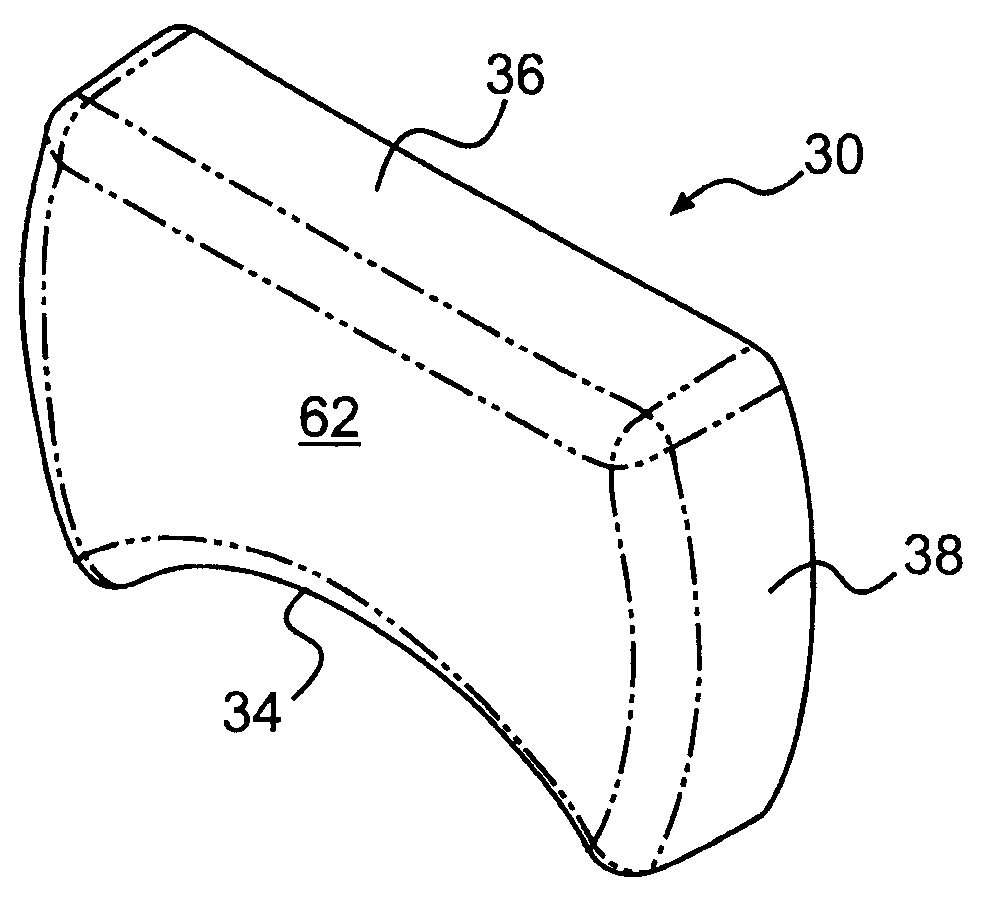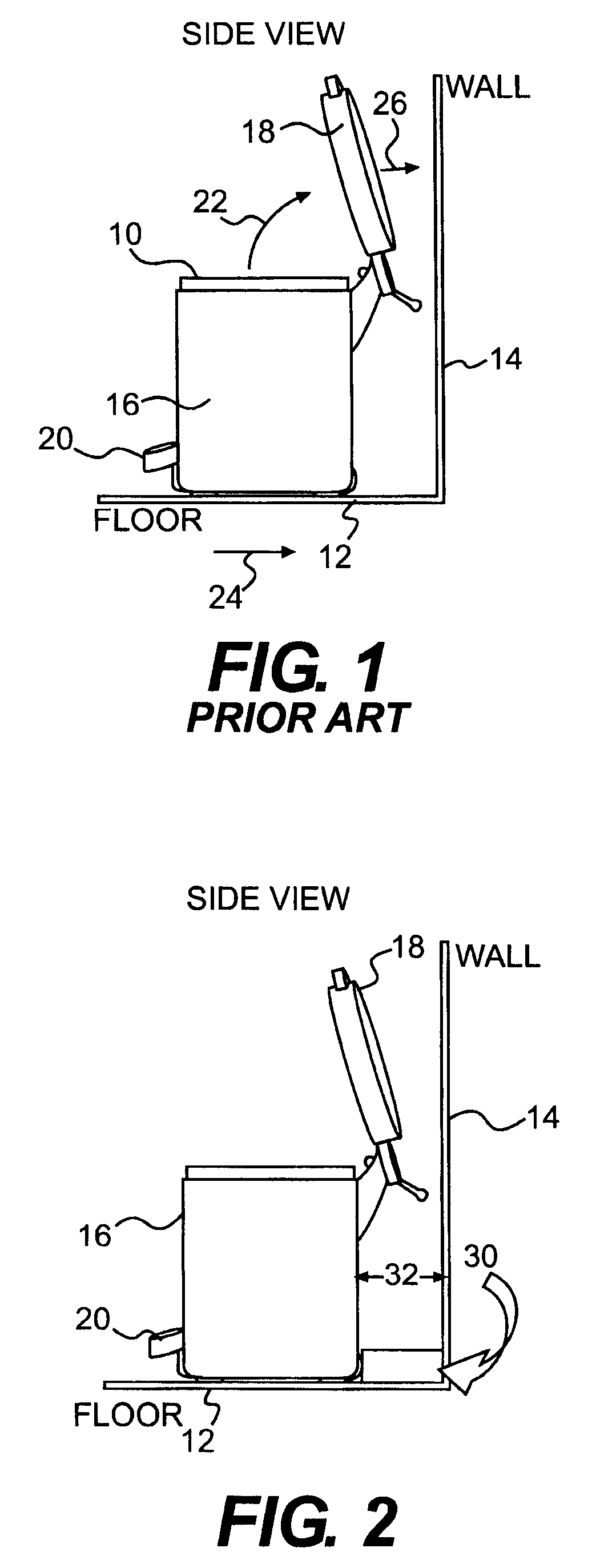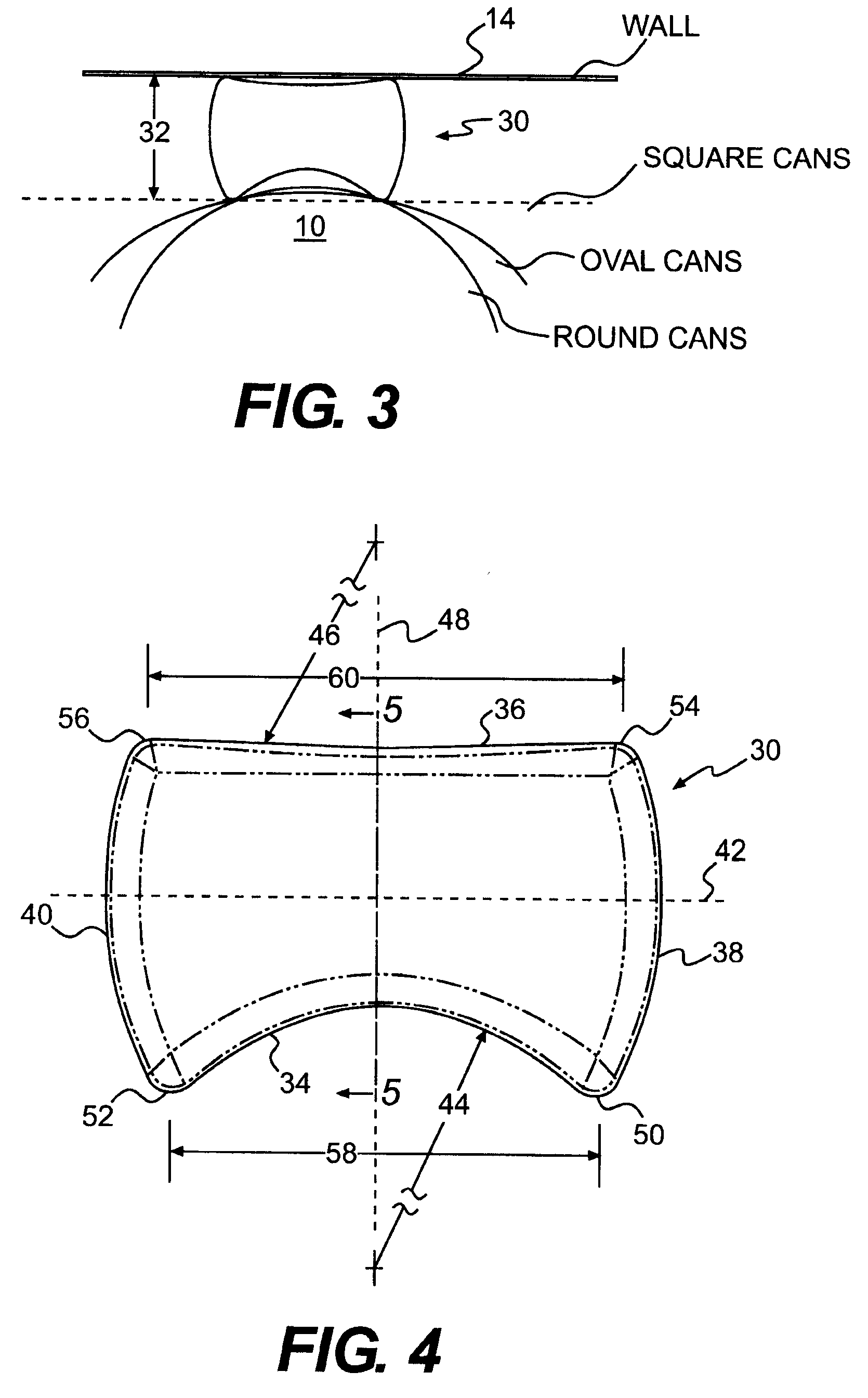Receptacle Positioning Apparatus
a positioning apparatus and receptacle technology, applied in the direction of manufacturing tools, furniture parts, and refuse gathering, can solve the problems of waste receptacles slipping or moving in a direction away from users, failing to address waste receptacles, and leaving a mark or other damage to adjacent walls, so as to achieve the effect of discouraging skewing of the body
- Summary
- Abstract
- Description
- Claims
- Application Information
AI Technical Summary
Benefits of technology
Problems solved by technology
Method used
Image
Examples
first embodiment
[0056]FIG. 4 is a top plan view of the apparatus 30 of the invention. This embodiment is the same as the apparatus 30 illustrated in FIG. 3. The apparatus 30 includes a first side 34 and a second side 36, which are opposed to one another. The apparatus 30 also includes a third side 38 and a fourth side 40, which are opposed to one another.
[0057]As is apparent from FIG. 4, the first side 34 curves inwardly toward a first centerline 42 between the first side 34 and the second side 36. In FIG. 4, the first surface has a continuous curve that is defined by a first radius of curvature 44. Similarly, the second surface 36 also curves inwardly toward the first centerline 42, albeit to a smaller extent than the first surface 34. As with the first surface 34, the second surface has a constant curvatures defined along a second radius of curvature 46. As should be appreciated by those skilled in the art, the illustrated first and second radii of curvatures 44, 46 are not required to practice t...
fourth embodiment
[0079]FIG. 13 illustrates the invention. This embodiment is a further variation of the apparatus 66. Here, the apparatus is designated by the reference number 102. The apparatus 102 differs from the apparatus 66 in that projections 104 have been added to the bottom surface 94. The projections 104 are added for instances where the waste receptacle 10 is placed in a carpeted environment. The projections 104 are intended to engage the piles of the carpeting to further secure the apparatus 102 in place. While three projections 104 are illustrated, a greater or a fewer number may be employed without departing from the scope of the invention.
[0080]Additional embodiments of the invention will now be discussed in connection with FIGS. 14-29.
fifth embodiment
[0081]FIG. 14 illustrates the invention. In this embodiment, the apparatus 106 includes a first side 108 and a second side 110. The first side 108 defines a first contact point 112 and a second contact point 114. The second side 110 defines a third contact point 116 and a fourth contact point 118. As in the prior embodiments, the first and second contact points 112, 114 are intended to engage a waste receptacle 10. As in the prior embodiments, the third and fourth contact points 116, 118 are intended to engage an immovable object such as the wall 14. In this embodiment, the distance between the first and second contact points 112, 114 is less than the distance between the third and fourth contact points 116, 118.
PUM
 Login to View More
Login to View More Abstract
Description
Claims
Application Information
 Login to View More
Login to View More - R&D
- Intellectual Property
- Life Sciences
- Materials
- Tech Scout
- Unparalleled Data Quality
- Higher Quality Content
- 60% Fewer Hallucinations
Browse by: Latest US Patents, China's latest patents, Technical Efficacy Thesaurus, Application Domain, Technology Topic, Popular Technical Reports.
© 2025 PatSnap. All rights reserved.Legal|Privacy policy|Modern Slavery Act Transparency Statement|Sitemap|About US| Contact US: help@patsnap.com



